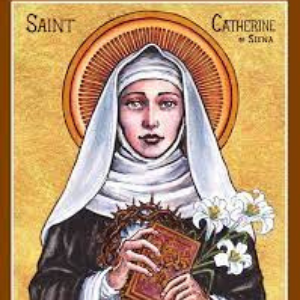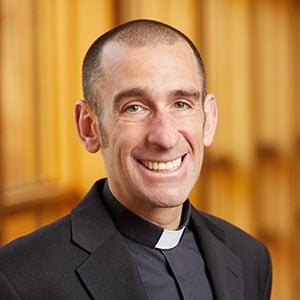 Late spring, both in my senior year of high school and in my final year of college, were seasons when the most was demanded of my time, energy and focus: final papers and exams piled up and there was little sleep. It was also the beginning of the championship season of track. In high school, it meant trying to achieve my PRs in the 3200 and 5000 meters while doing 8x400 meters with hurdles in preparation for the 3000-meter steeplechase. In college, it was preparing for the NESCAC 10,000-meter race and the DIII & DI championships. Looking back on those days, which were packed with study, writing, training and yes, a lot of socializing, I’m reminded of these words of encouragement from St. Catherine of Siena, Virgin and Doctor of the Church, who’s feast we celebrate today:
Late spring, both in my senior year of high school and in my final year of college, were seasons when the most was demanded of my time, energy and focus: final papers and exams piled up and there was little sleep. It was also the beginning of the championship season of track. In high school, it meant trying to achieve my PRs in the 3200 and 5000 meters while doing 8x400 meters with hurdles in preparation for the 3000-meter steeplechase. In college, it was preparing for the NESCAC 10,000-meter race and the DIII & DI championships. Looking back on those days, which were packed with study, writing, training and yes, a lot of socializing, I’m reminded of these words of encouragement from St. Catherine of Siena, Virgin and Doctor of the Church, who’s feast we celebrate today:
Nothing great is ever achieved without much enduring.
And when I ask myself how I stayed focused while burning the candle at both ends and stretching myself intellectually, spiritually, emotionally and physically (although I may not have articulated it this way at the time) again, St. Catherine’s words come to mind:
The human heart is always drawn by love.
This phrase from St. Catherine sums up so beautifully what inspired this great saint to be drawn, at times, in all directions. Whether she was plunging into the depths of intimacy with God in prayerful contemplation, serving her brothers and sisters in need, or zealously defending the truth and demanding authenticity, purity and courage from clergy—even the Popes—during one of the more challenging periods in the Church’s history, it was done all for the sake of love.
St. Catherine’s life exemplified complete and total surrender to Christ. At eighteen, having defied the wishes of her parents, who wanted to wed her to her widowed brother-in-law, Catherine entered the Dominican Third Order and into a three-year period of solitude, prayer and asceticism. Attracted by her apparent holiness; depth of wisdom and intelligence; and perhaps her charismatic personality (she is said to have exuded a sense of cheerfulness that complimented her intense devotion to God)—many young people, particularly from among the nobility, gathered around her. When the plague tore through Italy, taking a third of the population with it, Catherine went to minister to the sick and to lepers.
Living in an extremely tumultuous time, Catherine maintained an unbelievable breadth of correspondence with political and religious leaders. This was also a time in which the Church was beset simultaneously with scandal and the crusades. At the beginning of the Great Schism in 1378, the allegiance of Christendom was divided between two, then three, popes. It is well known that St. Catherine traveled from her home in Italy to Avignon, France, to persuade Pope Gregory XI to return to Rome. After three months of pleading and reminding the Pope to be true to his vows and basically to do his job, Catherine was successful. His successor, Pope Urban VI would also call upon her to assist him in working for unity in the Church and to bring an end to the schism. But she died shortly thereafter, as D.D. Emmons notes, “as a victim for the Church in its agony.” She was thirty-three years old.
Pope Paul VI declared her a Doctor of the Church in 1970. She is the patron saint of Europe, Italy, fire prevention and miscarriages. As a lay woman, mystic, reformer and courageous defender of the faith, she is also a fitting patron saint for the Church, especially in times of crisis. And yet, what moved St. Catherine was “a human heart drawn by love.”
As the demands on your plate pile up this late spring and you feel yourself being challenged intellectually, spiritually, emotionally and physically, follow St. Catherine’s lead and surrender to Christ. And in whatever you are drawn to do, hear her cheering you on, perhaps in a whisper:
Nothing great is ever achieved without much enduring.
The human heart is always drawn by love.

 Fr. Ryan Lerner, Chaplain
Fr. Ryan Lerner, Chaplain


